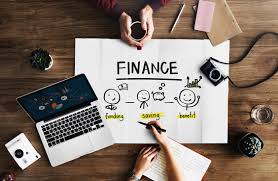How mobile money is transforming economies in Africa and Asia.
 Finance Freak
Finance Freak
Mobile money is transforming the way finance works in many African and Asian economies, especially in areas where traditional banking infrastructure is poor or nonexistent. In that regard, mobile money services allow people to store and transfer money via their mobile phones and can be a good tool for achieving financial inclusion, economic growth, and poverty reduction. Mobile money has offered banking services to millions of people in countries with high unbanked populations, and it is doing so in a manner that makes them economically productive due to better availability of broader financial opportunities and helps improve living conditions.
The mobile money service is offering one of the biggest benefits: bridging the gap in terms of financial inclusion. Geographical, economic, and social barriers limit access to traditional banking services across many parts of Africa and Asia. Many rural areas have few bank branches, or severe opening requirements - such as documentation, a minimum amount of money, or even credit history - that simply cannot be met by low-income clients. In Kenya, M-Pesa and, in Bangladesh, bKash are just a few of the mobile money platforms that have circumvented the above limitations by offering one simple and easy means of accessing financial services through the mobile phone. With the most basic handsets, the customers can open accounts, deposit funds, pay for their bills, send money, and save funds without requiring an existing bank account. This ease of access has extended financial services to formerly unbanked populations, including women, rural farmers, and small business owners. Mobile money facilitates entrepreneurship and small businesses in providing economic growth. In Africa and Asia, a significant majority of the workforce falls within the informal sector, where credit and other financial services have been limited in history. Mobile money platforms allow small businesses and micro-entrepreneurs to accept digital payments, which thereby allows them to better manage their cash flows, have less cash-in-hand usage, and will thus increase access to credit facilities. A number of mobile money services have supplemented these with microcredit and insurance products, enabling loan portfolios or asset insurance for small business entrepreneurs based on the history of their mobile transactions, which is used to proxy for creditworthness. Mobile money empowers entrepreneurs to expand their businesses through financial instruments that, until recently, were beyond their reach.
Mass scale mobile money adoption also made sending both local and cross border remittances much easier, because for most families, especially in developing countries, these are a source of significant income. Traditionally, money transferred across borders, or even in some cases between rural and urban areas, is expensive, time-consuming, and hazardous. For example, mobile money has made it easier and cheaper to send and receive remittances. Million of lives in countries such as Kenya, Tanzania, the Philippines, and several others have become a lifeline due to remit recurrences that help pay for education, healthcare, or whatever other essential services one may need. Mobile money has eased the cost and bother of making remittances transfers, thus increasing the financial resilience of households and communities, while at the same time reducing reliance on informal channels of money couriers that can be steeped in security risks.
Mobile money has equally transformed the landscape of government disbursement and humanitarian aid. In Africa and Asia, governments have increasingly used mobile money for welfare payments, pensions, and subsidies mainly to rural populations. For example, during the pandemic of COVID-19, mobile money became one of the important means through which emergency cash transfers reached vulnerable populations affected by lockdowns and economic disruptions. Using mobile money, governments and aid organizations were able to reach people much more efficiently and quickly than in the past-but with less corruption and leakage of funds. Such transparency and efficiency in government-to-person payments have helped strengthen social safety nets in many countries, offering a more reliable way of disbursing financial assistance.
Its most major macro-level impact is in terms of contributions to financial stability and the formalization of the informal economy. In locales where the informal economy represents significant shares of economic activity, mobile money platforms create a kind of record of transactions that may be useful for tracking trends and for informing better financial oversight. This shift from cash to digital payments encourages transparency, reduces risk factors, which include theft, loss, or fraud related with a cash-based economy, and thus enables governments to have greater oversight of economic activities, better tax collection, and proper economists' design of economic policies. This mobile money service contributes to the provision of a digital financial ecosystem through which one has better access to a lot more financial services such as savings accounts, insurance, and loans that could otherwise be inaccessible.
Subscribe to my newsletter
Read articles from Finance Freak directly inside your inbox. Subscribe to the newsletter, and don't miss out.
Written by
